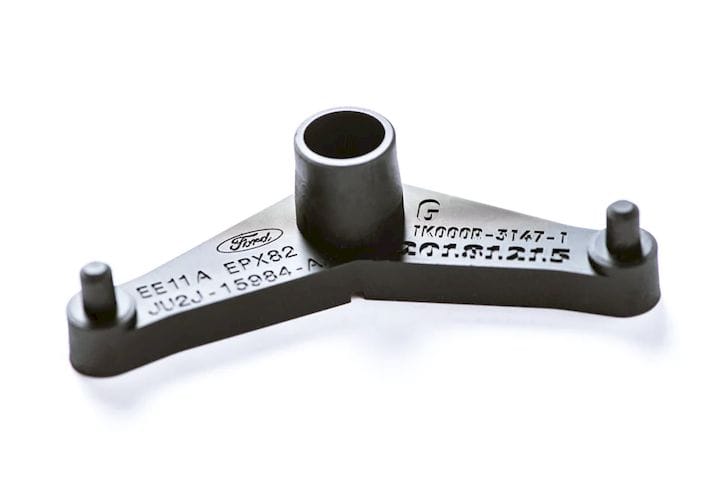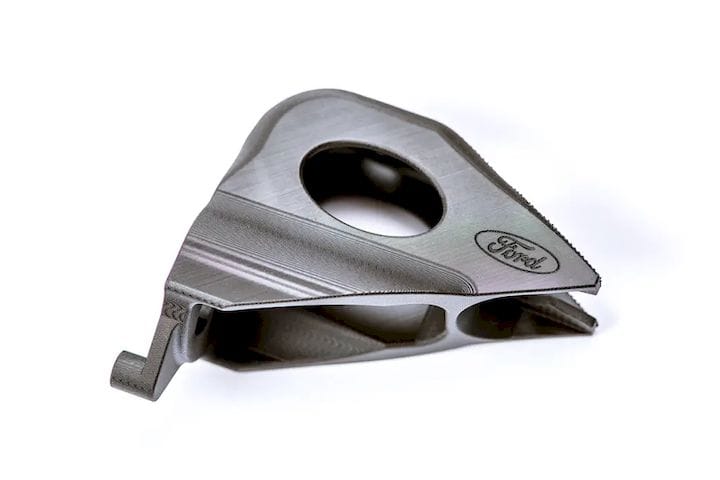
Ford Motor Company has been a long-time partner of Silicon Valley-based 3D printing firm Carbon.
Originally testing the potential for Carbon’s quick, layer-less Digital Light Synthesis (DLS) technology, Ford has tagged along with the company nearly since its inception. We are now beginning to see the partnership come to fruition as the two businesses unveil the first series of end parts made using DLS technology.
At the North American International Auto Show, Ford and Carbon showcased Ford Focus Heating, Ventilation and Cooling (HVAC) Lever Arm Service Parts, Ford F-150 Raptor Auxiliary Plugs, and Ford Mustang GT500 Electric Parking Brake Brackets 3D printed with DLS technology.

The parts were printed from Carbon’s EPX 82 material, which the company describes as “a cross-linked aromatic epoxy/amine” (more on epoxies here) that maintains its high-strength over long periods of time.
Carbon suggests that the material was ideal for use in these automotive applications due to its ability to meet Ford’s standards of “interior weathering; short- and long-term heat exposures; UV stability; fluid and chemical resistance; flammability (ISO 3795); and fogging (SAEJ 1756) for the selected applications.”
Read more at ENGINEERING.com











Healthcare 3D printing attempts to solve two problems that plague providing care: customization and cost.